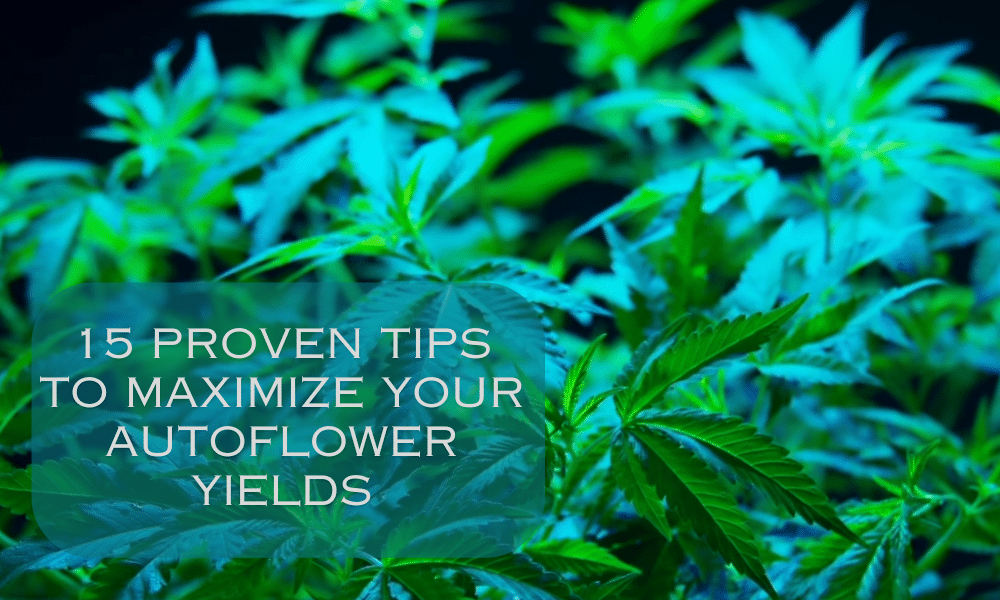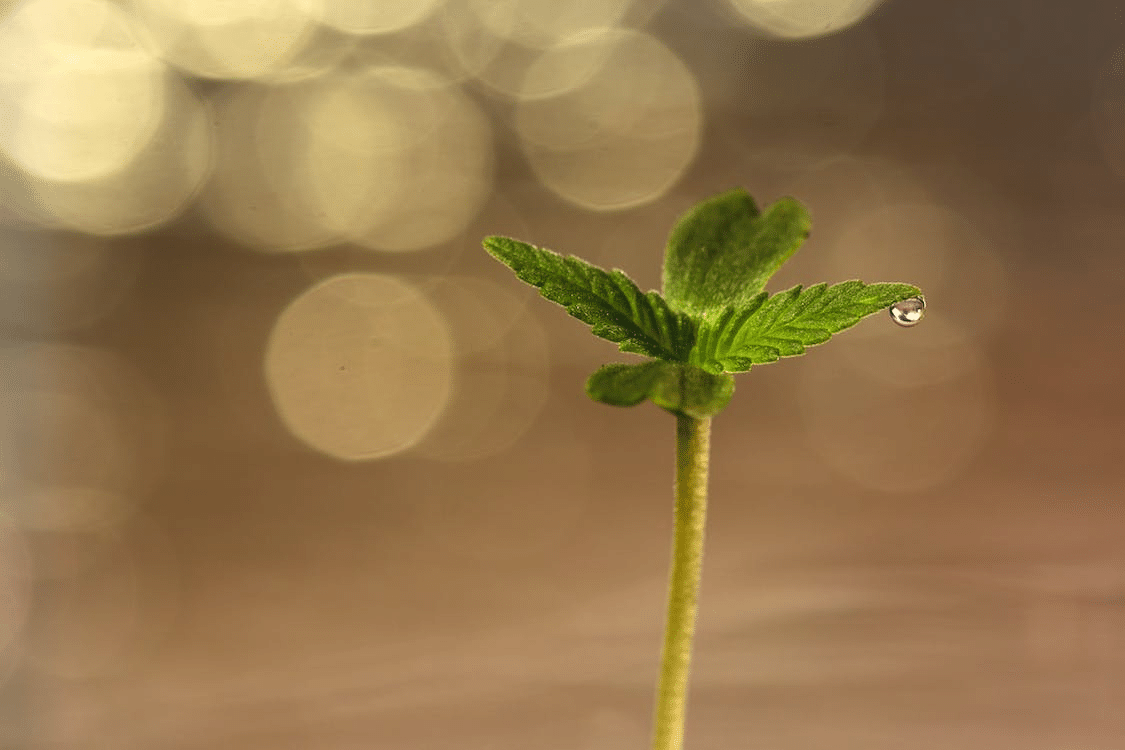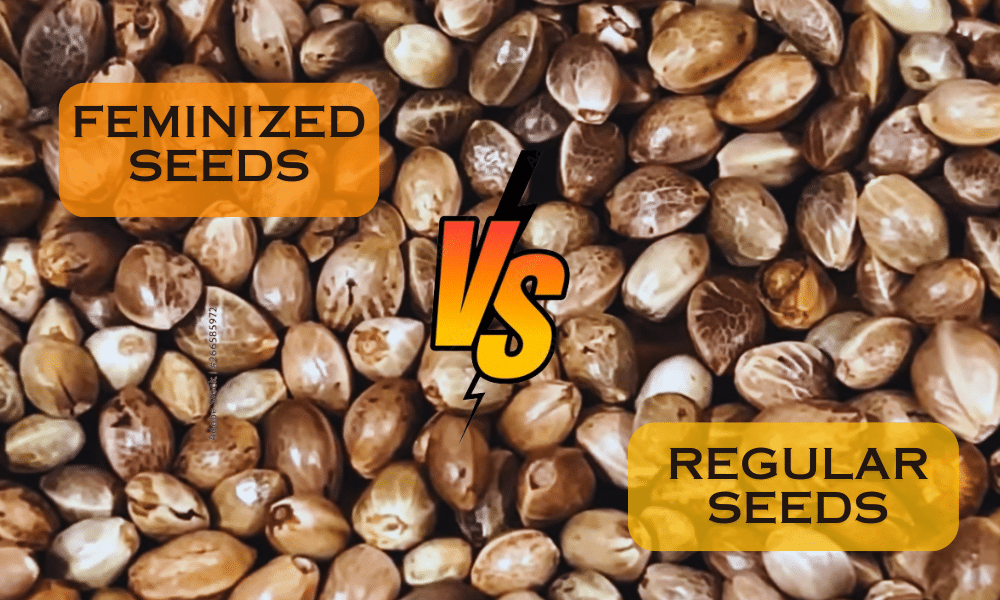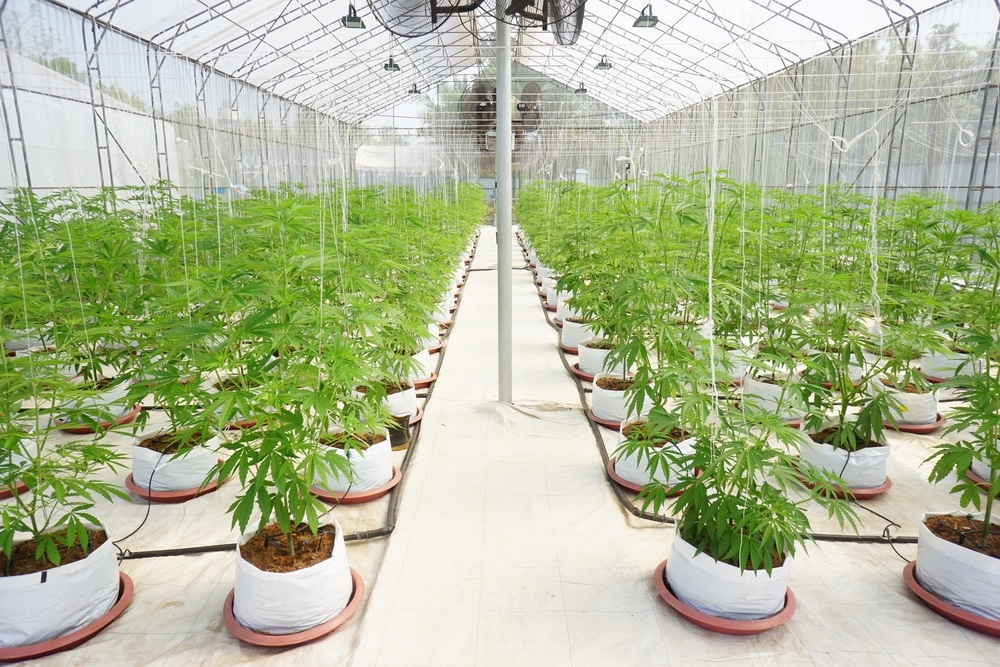No products in the cart.
Marijuana Education
The Best Way to Start Marijuana Seeds
Knowing the best way to start marijuana seeds gives your plants the best chance of success. Germination is a crucial part of the marijuana life cycle. It contributes to healthy root systems and solid structures.
Cannabis seeds are living organisms that need care and ideal conditions. Getting them to sprout is easy to master if you follow the right methods.
Do you want to improve your cultivation results? We’re here to guide you, whether you’re new or experienced with growing marijuana.
Join us to discover the importance of germination and how to do it. We also explore the different seed types and the best ways to look after them.
Let’s sprout those seeds!
The importance of proper seed germination
So you’re looking for big, juicy buds and phenomenal harvests? The first step is learning the best way to start marijuana seeds. It involves encouraging them to sprout or “pop.” A tiny taproot emerges from the shell, signaling the beginning of the plant’s life cycle.
Choosing the best marijuana seeds improves your chances of successful germination. Stable genetics contribute to healthy development and high-quality effects.
Let’s explore how cannabis grows to understand the importance of germination better.
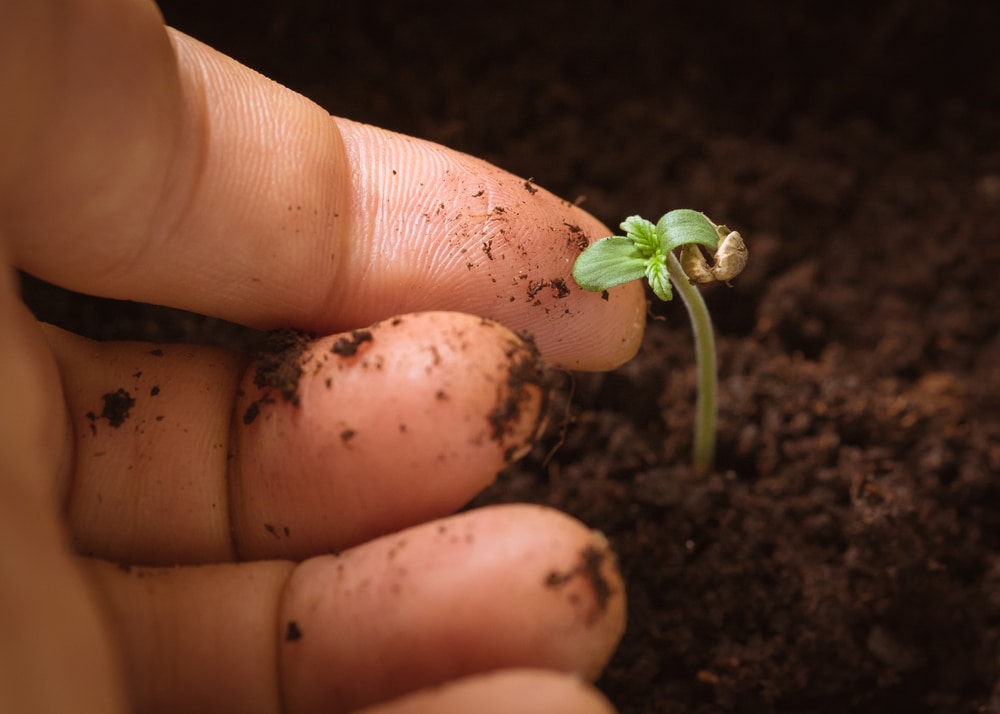
Overview of the marijuana seed’s life cycle
Marijuana seeds go through four growth stages:
- Germination: A dormant seed springs to life by sprouting its taproot.
- Seedling: The cannabis plant forms its root system, and tiny leaves start growing.
- Vegetation: Most of the key growth happens. More stems and leaves develop, and the plant needs more water and nutrients. The sex also becomes clearer toward the end of this stage.
- Flowering: Females develop buds, and males produce pollen sacs. The plants shift focus from structural growth to flower development.
Sprouting cannabis seeds ensures these stages are as healthy as possible. It boosts the plants’ chances of growing bigger and lowers the risk of issues.
Why proper germination matters
Understanding the best way to start marijuana seeds is essential. Successful germination contributes to healthy cultivation.
The cannabis plant’s embryo expands as it absorbs water, then a healthy root emerges. Baby seedlings depend on a sprouted seed during their initial growth. They need natural nutrients from the shell to kick-start development.
Germination is crucial, as it determines if the plant will be healthy or die. The taproot grows into the primary root, establishing a robust support system. It’s like a house without a solid foundation. Your crops can face issues later if the seed doesn’t pop.
Understanding cannabis seeds
Genetics play a significant role in how cannabis develops. All seeds sprout similarly, but the plants display unique growth characteristics.
The genotype of a plant refers to its genetic composition and growth type. Its phenotype is the physically expressed traits like height, appearance, color, and smell.
Types of marijuana seeds
There are three primary types of marijuana seeds: regular, feminized, and autoflowering.
Modern technology and breeding have introduced new and exciting genetics. Hybrids of different strains exist for combined traits. There are also fast versions that have shorter blooming periods.
Other sub-categories exist, like indica, sativa, CBD, and high-THC seeds. They all suit different preferences, depending on what you want. Choosing the right strain and type is vital before you learn the best way to start marijuana seeds.
Regular, feminized, and autoflowering seeds
What are your goals for your cannabis garden? Each seed type produces unique results and suits different preferences. It’s easy to find an ideal one for you, whether you’re a breeder or recreational user.
- Regular cannabis seeds: Naturally occurring genetics that can produce either males or females. They’re popular among breeders who want to experiment and create new strains. Cross-pollination can happen if you leave the two sexes together.
- Feminized cannabis seeds: Manipulated genetics that usually have around a 99% chance of producing female crops. They’re excellent for beginners and popular for bigger yields and high-quality buds.
- Autoflower cannabis seeds: Feminized or regular genetics usually crossed with a ruderalis strain. They produce plants that don’t need lighting changes to start their flowering period. Crops are more resilient and have a shorter life span.
We recommend you grow feminized seeds if you’re new to cannabis cultivation.
How to choose the right seed for your needs
Research different strains to learn what traits they have. The seed’s product page usually provides all the information you need. You’ll see what effects they produce and how they grow. You can also find out what they need and how they smell and taste.
Some people prefer indica seeds, which usually produce more relaxed and cerebral effects. They grow short and bushy. Others enjoy sativas, which are popular for providing energetic, physical, and creative moods. They’re generally thin and tall.
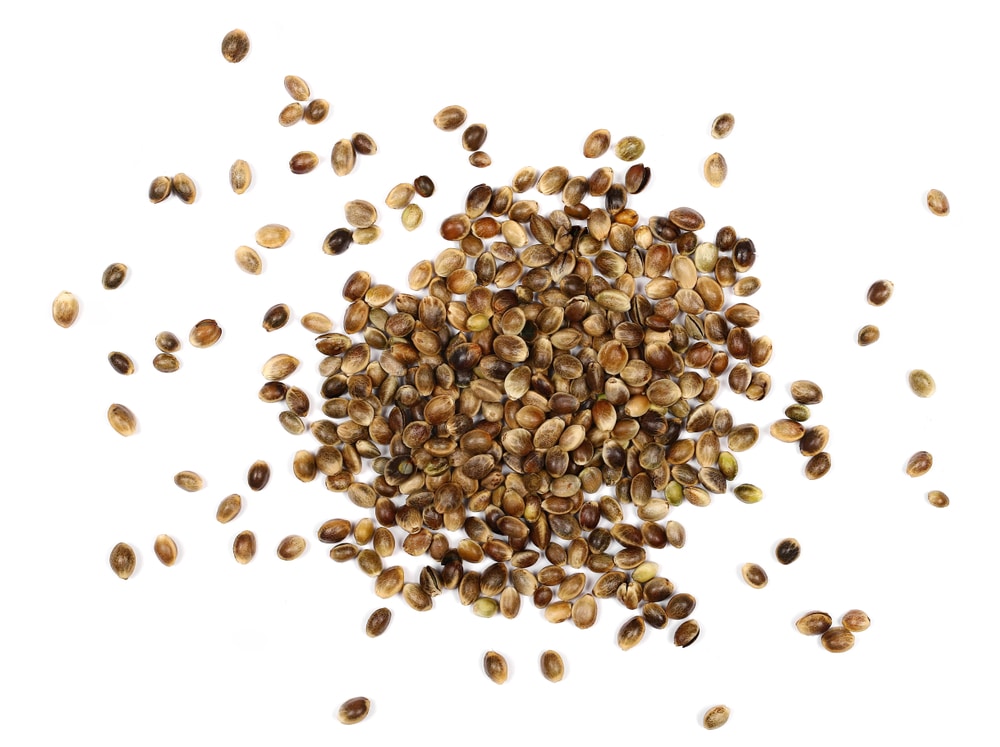
Checking the quality of your seeds
The best way to start marijuana seeds is to ensure they’re high quality. They might not germinate if they come from an unreliable source.
It’s important to note that all seeds come in different shapes and sizes. These traits aren’t reliable quality indicators. Instead, you can inspect their feel and color to determine that.
Identifying healthy vs. unhealthy seeds
Check that they’re not entirely black, pale yellow, or dark green. These colors usually signify low-quality, unhealthy, or expired seeds. Their shells are soft, have cracks or gaps, and break when you apply pressure.
Healthy, high-quality seeds are dark brown with light stripes. They look like a dewdrop and are sturdy to the touch.
The float test is also an effective method for checking the quality. Put your seeds in a glass of water and wait about one or two hours. They’re healthy if they sink but likely poor quality if they float. Germinate them immediately if they pass the test.
Storage tips for cannabis seeds
Incorrect storage can lead to problems and unhealthy plants. Wrong temperature, humidity, and oxygen levels disrupt the seed’s hibernation and cause issues.
Here are some tips on the correct storage:
- Keep your seeds inside and away from the light. A dark area with stable temperatures, like a drawer or cupboard, is ideal. Store them in a black ziplock bag or vacuum-sealed container.
- Maintain a relative humidity of 20–30% for short-term storage and 12–14% for long-term. Above 30% can trigger germination, and below 8% attracts pests and insects.
- Keep the temperatures stable at 39–50°F for the best results. Unexpected germination is less likely if these levels are lower.
- Keep the environment moisture-free. Contact with water can cause your seeds to sprout immaturely or cause mildew to develop.
- Ensure the storage area is sterile and clean. The higher above ground it is, the better. There’s less chance of pests, rodents, and insects finding your seeds.
Freezers are only necessary if you’re storing your seeds long-term. Germinate them immediately after taking them out of the cold.
Best ways to start marijuana seeds
It’s time for the most exciting part now that you know about genetics and the factors of germination. Let’s explore the best way to start marijuana seeds.
Germinating marijuana seeds
There are three popular methods of sprouting marijuana seeds. The one you choose depends on your preferences and materials.
We offer a germination guarantee with all purchases from our store. Follow the techniques below and document your progress with photos. Contact us if your attempts fail; we’ll replace your seeds for free.
The paper towel method
This is the most common germination technique with the highest chance of success. Follow these steps to do it:
- Place a moist (not damp) paper towel on a dinner plate.
- Spread your seeds at least an inch apart, then cover them with another moistened paper towel.
- Place another plate on top, ensuring no light can enter.
- Move them to a dark, dry, and warm area.
- Check on the seeds regularly and apply extra water if needed.
- Keep them moist until tiny taproots emerge after one to five days. Transplant them into your growing medium once they pop.
Some seeds may take up to ten days to sprout. Discard them if they don’t pop after two weeks, as they’re likely duds.
Direct soil planting method
Many growers consider this approach the best way to start marijuana seeds. Soil provides the most natural environment for healthy growth. It’s straightforward and helps you avoid the risks of transplanting.
Use well-aerated, organic soil with proper drainage. Make half-inch holes and place your seeds inside. Cover them again and provide moisture by spraying the surface. Avoid overwatering the earth, but give enough to encourage germination.
The glass of water method
Water germination is easy and helps test your seeds’ quality. It isn’t the most effective approach, but it works.
Drop the seeds into a glass of purified or bottled water at around 71°F. Move the glass to a dark, warm environment and wait a few days for taproots to sprout. Move them from the water to a growing medium after they pop.
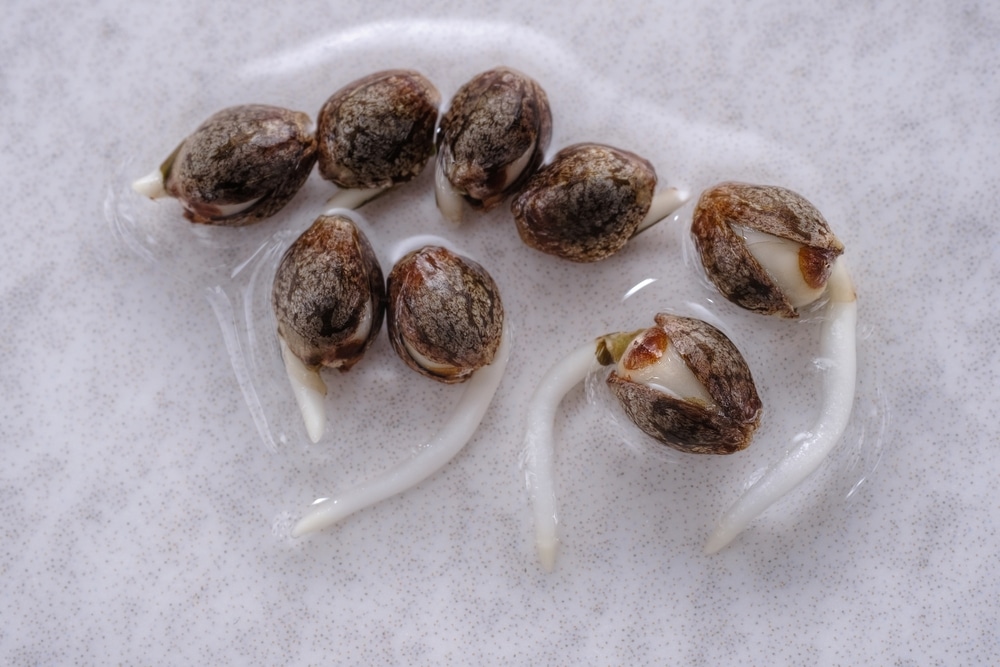
Transplanting germinated seeds
Transplanting seeds is a delicate process that happens after the taproots sprout. It requires gentle care to avoid harming them or causing issues.
When and how to transplant seedlings
It’s best to transplant a seed as soon as its taproot appears. Make a hole in the soil or other chosen growing medium. It should be twice as big as the seed.
Use clean hands to move your seedling into soil or another chosen growing medium. Ensure the tiny root is facing the bottom of the hole. Tweezers can help you move the seed, but be gentle with it.
Tips for avoiding transplant shock
Transplant shock occurs if your seed faces sudden changes, contamination, or excess handling. Avoid this issue by ensuring you don’t disturb the root system too much. Don’t move your seedlings a lot and avoid overwatering them.
Care for marijuana seedlings
Part of learning the best way to start marijuana seeds is knowing proper care after they sprout.
Providing optimal light for seedlings
The optimal lighting equipment and schedule provide the best chance of healthy plants. It also helps you boost yields and avoid cannabis light burn.
Choosing the right light source
Light-emitting diodes (LED) and compact fluorescent lamps (CFL) are ideal indoor lights. They’re multipurpose and help to mimic an outside environment. Choose broad-spectrum globes that let you change the colors to suit each growth stage.
Setting the correct light schedule
Photoperiod strains need an 18/6 light schedule during the seedling and vegetative stages. Provide them with 18 hours of illumination and six hours of darkness daily.
Switch to an equal 12 hours of light and 12 hours of dark to trigger the flowering phase. Specialized systems exist to help you turn the lights on and off automatically.
Managing water and nutrients
Watering and feeding your baby plants is vital for encouraging healthy growth. Irregular or excessive changes can cause issues.
Understanding seedlings’ watering needs
Provide your seedlings with pH-balanced, purified water. You only need to keep the soil moist during this time. A spray bottle can help avoid overwatering. Top them up about three to six times daily, ensuring the top inch of the earth doesn’t run dry.
Nutrient requirements for young plants
Seedlings don’t need extra nutrients before they veg. The soil should provide enough minerals to help them grow. Avoid using a strong fertilizer so your baby plants don’t experience nute burn.
Start feeding nitrogen, phosphorus, potassium (N-P-K) when your crop enters vegetation. Don’t forget other essential nutrients like magnesium and calcium. Buy a fertilizer or nute pack that details the ideal ratios for each growth phase.
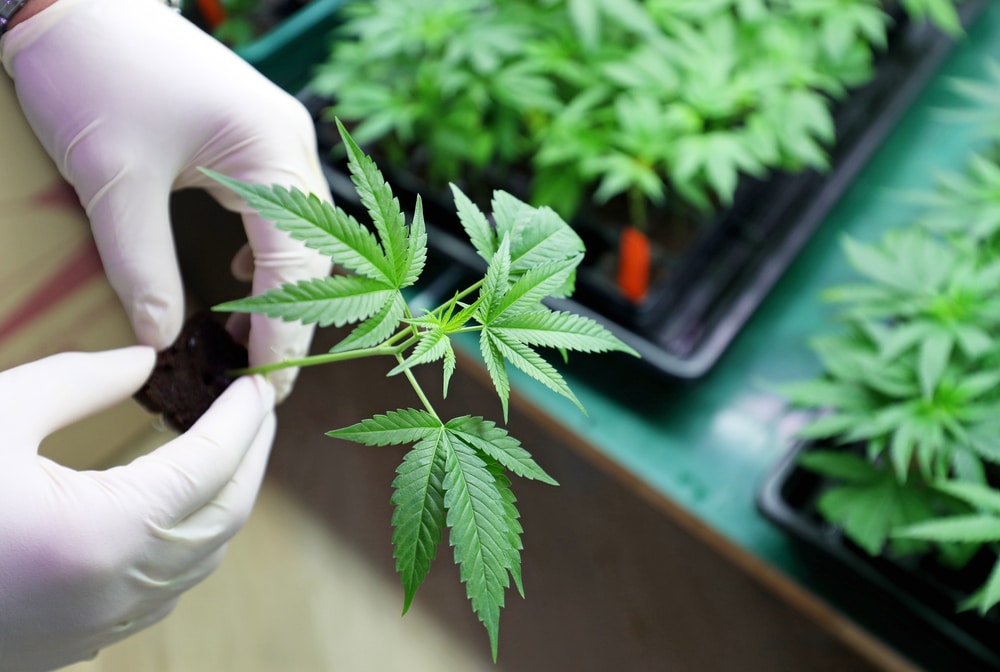
Monitoring and adjusting environmental conditions
Cannabis seedlings need a stable environment after they sprout. Below are some guidelines on the ideal conditions to put in place.
Ideal temperature and humidity for seedlings
Cannabis seedlings need a consistent temperature to thrive. Keep the room at 68–77°F during the day and about 59–65°F at night.
Humidity saves or destroys weed, so ensuring the correct levels is crucial. Your seedlings need a relative humidity (RH) of 65–80%. Drop these levels gradually in the vegetative and flowering stages. Ensure they don’t go below 30% or above 80%.
Set up humidifiers and dehumidifiers in your grow room. They help to maintain consistent humidity levels.
The importance of good air circulation
Proper ventilation in your grow room promotes healthy airflow distribution across the plant. It helps prevent fungi and mold from developing and keeps pests away. Your crop absorbs moisture and transpires better when a gentle breeze flows.
Place fans in your grow room and ensure a proper extraction system is in place. They boost air circulation and give you a healthy crop with abundant yields.
Troubleshooting common seedling problems
Growing marijuana isn’t always going to be a smooth, problem-free journey. Even the most experienced cultivators could face issues for different reasons. Understanding how to handle seedling problems helps you tackle them better next time.
Identifying and correcting growth issues
Several issues could arise when growing cannabis plants. Yellowing leaves, drooping stems, or spotted buds usually indicate a larger problem. They could happen because of stress, a lack of water or nutrients, or pests and diseases.
Pay close attention to your plants daily. Inspect them for potential issues and symptoms so you can handle them immediately.
Dealing with slow or stunted growth
Nutrient deficiencies often lead to slowed or stunted growth. It could also signify a lack of water, incorrect lighting, or improper airflow.
Check that all the environmental factors are stable and consistent. Interrupted light schedules can stunt growth, so ensure no leaks in your grow room. Don’t overwater your plants, but ensure the top inch of soil remains moist.
Check the pH levels to ensure they’re correct for your growing medium. Soil needs a pH of 6.5–7.0, and hydroponic systems should have it at 5.6–5.8. The optimal pH for soilless mediums is 6.0–6.3.
Common seedling diseases and their treatment
Several diseases could affect your crop. Here are the three most common ones and how to treat them:
- Powdery mildew: Causes white, powder-like spots on stems and leaves. Use organic fungicides to treat it, and ensure enough airflow among your plant’s foliage.
- Botrytis (bud rot): Causes gray mold to develop on the plant, most often on buds. Check your buds daily and ensure no excess moisture buildup. Remove them immediately if you notice graying and dry, soft leaves and stems.
- Fusarium (root rot or fusarium wilt): Causes wilting and decay in the leaves, roots, stems, and foliage. There are no available treatments, but prevent it by not reusing the same soil for new plants. Destroy infected crops and ensure the earth isn’t too acidic.
Trifecta Crop Control is an excellent product for treating molds, diseases, and pests.
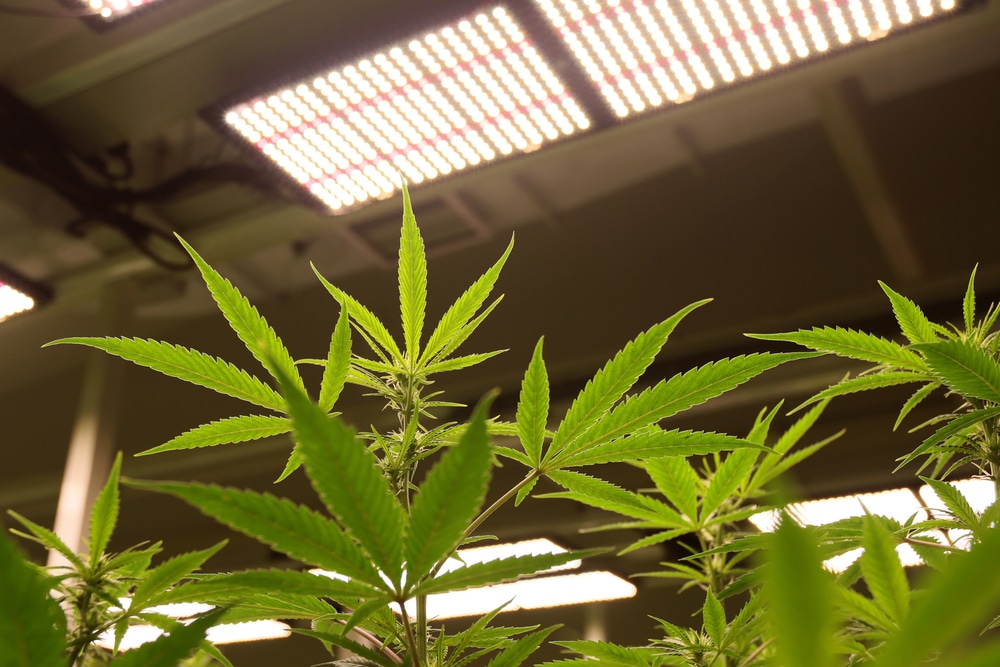
Handling nutrient and environmental stress
Environmental stress and nutrient deficiencies or toxicities can cause stunted growth or death. Beneficial training techniques exist for various purposes, like cropping and bending. Plant shock usually results in drooping limbs and smaller yields.
Recognizing nutrient deficiencies or toxicities
Some common nutrient deficiencies and toxicities include:
- Nitrogen: A deficiency causes stunted growth and yellowing leaves. Toxicity causes weak stems and foliage and dark green bottom leaves.
- Phosphorus: Dark blue-green leaves and withering foliage from a deficiency. Burned leaf tips and lower yields with “chemical-flavored” buds from toxicity.
- Potassium: Deficiencies cause brown spots on curling, yellowing leaves. Toxicities result in thinner leaf blades, burned leaf tips, and black, dying root tips.
- Calcium: Deficiencies cause brown spots, stunted growth, diminished harvests, and slowed bud development. Toxicities cause wilted leaves and prevent proper uptake of other nutrients.
- Magnesium: A lack of this nutrient causes yellowing leaf veins, rusted brown spots, and a sick appearance. An excess results in darker green foliage and stunted growth.
How to mitigate environmental stress factors
Ensure all factors in your grow room remain consistent. Reduce the temperatures with fans if they’re too high, or raise them with small heaters if they’re low. Check that your plants are equally spaced apart and have enough room to grow and breathe.
Open more windows to promote better airflow and ensure there are no light leaks at night. Address any irregular conditions to stop potential issues from occurring.
Give your cannabis plants the best start for successful growth
It’s time for the fun to begin now that you know the best way to start marijuana seeds. Proper germination sets the stage so that the rest of your plant’s life is successful.
It involves keeping them moist and in a dark area to encourage them to sprout their taproots. The paper towel technique is the most popular. Direct soil germination or the water glass method also works.
Below are a few extra tips to guide you toward success.
The art of starting marijuana seeds successfully
Germinating marijuana seeds is a delicate process. It involves patience, care, and commitment, like a work of art.
Treat your seeds gently and ensure the environment and tools are clean and sterile. Wear gloves for extra protection, and use tweezers to avoid excess handling. Minimal stress increases the chance of prosperous plants.
The importance of observation and patience
Constantly observing your seeds and plants is vital in case problems arise. Watching your crop flourish is also a rewarding aspect of cannabis cultivation.
All strains are unique, so some may take longer to reach harvest than others. Growing cannabis requires patience and care. Your plants are like babies, so they need you to look after them as best you can. Rushing their growth results in issues, so be patient, and they’ll reward you.
Embracing challenges as learning opportunities
Marijuana cultivation takes practice, but the correct approaches yield the best results. You become a master grower by educating yourself. Try different strains to find which techniques and effects suit you best.
Don’t beat yourself up if you experience some failed harvests, diseases, or pests. Determine what went wrong and use that information to improve your next attempt. Challenges strengthen your problem-solving, helping you become the best grower you can be!
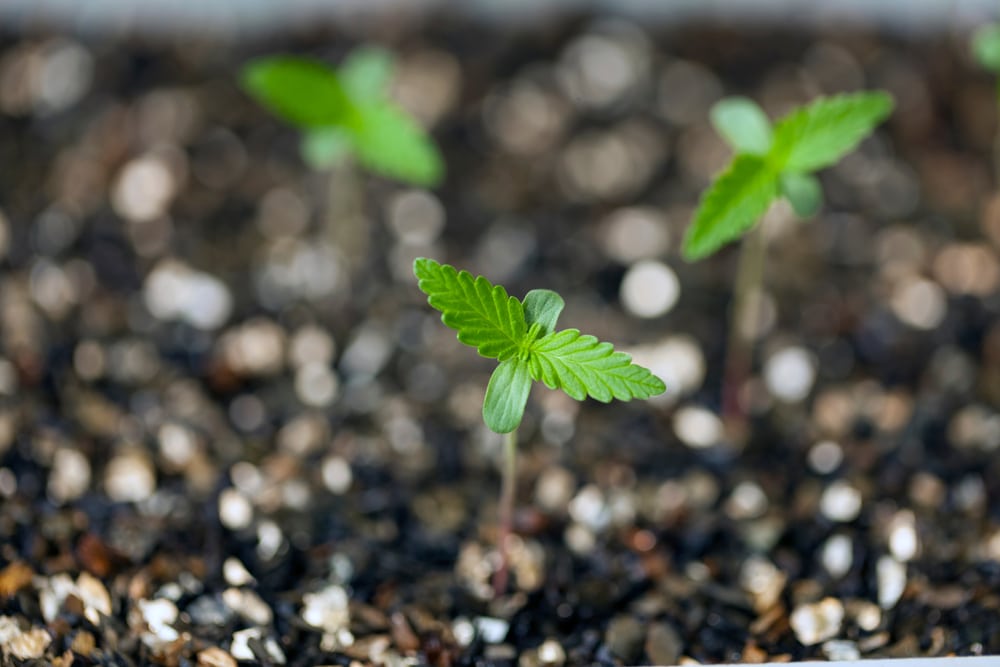
Additional resources for starting marijuana seeds
Many resources exist on the best way to start marijuana seeds. There are also plenty of guides to teach you how to cultivate them proficiently. Educate yourself and talk to other growers to become an expert cultivator.
Recommended books and online guides
Our Seed Fair blog has in-depth and informative guides. Read through them to give yourself the best shot at getting a healthy harvest.
Here are three excellent books we recommend for further knowledge:
- The Cannabis Grow Bible: The Definitive Guide to Growing Marijuana for Medical and Recreational Use (2004) (Author: Greg Green).
- Marijuana Grower’s Handbook (2010) (Author: Ed Rosenthal).
- Marijuana Growing Secrets (2020) (Author: Calvin Newman).
These books cover the best way to start marijuana seeds. They also provide detailed explanations of the entire marijuana life cycle. Find them for sale in physical copies or ebooks on Amazon.
Engaging with marijuana growing communities
Cannabis cultivation is a fun and exciting experience best shared with others. Talking to fellow growers helps you learn new techniques and gain valuable insights.
Communities and forums allow you to post images and discuss recipes for consumption. They’re also great places to make new stoner friends.
Here are four popular online networks for marijuana growers:
- Grasscity Forums: Provides platforms to discuss growing techniques, consumption methods, and smoking accessories. Home to over 600,000 global members.
- Rollitup: Allows discussions on any cannabis-related topics in an extensive community. They have all the information you need, from the best grow rooms to fun activities and games to play when high.
- 420 Magazine Community: Contains everything 420, including strain reviews, grow journals, and contests. They also have an extensive medical forum and a space for open legal discussions.
- Future 4200: Takes a unique forum approach to cannabis. It provides information on the scientific and technological side of the plant. You can discuss the future of cannabis with others and learn advanced growing techniques.
Now you know more about germinating seeds and gaining expertise. Are you ready to embark on your exciting cultivation journey?
Browse our store to find high-quality strains and put the best way to start marijuana seeds into practice. We stock various products that suit all preferences. You’ll become a master home-grower in no time. Enjoy the experience!



